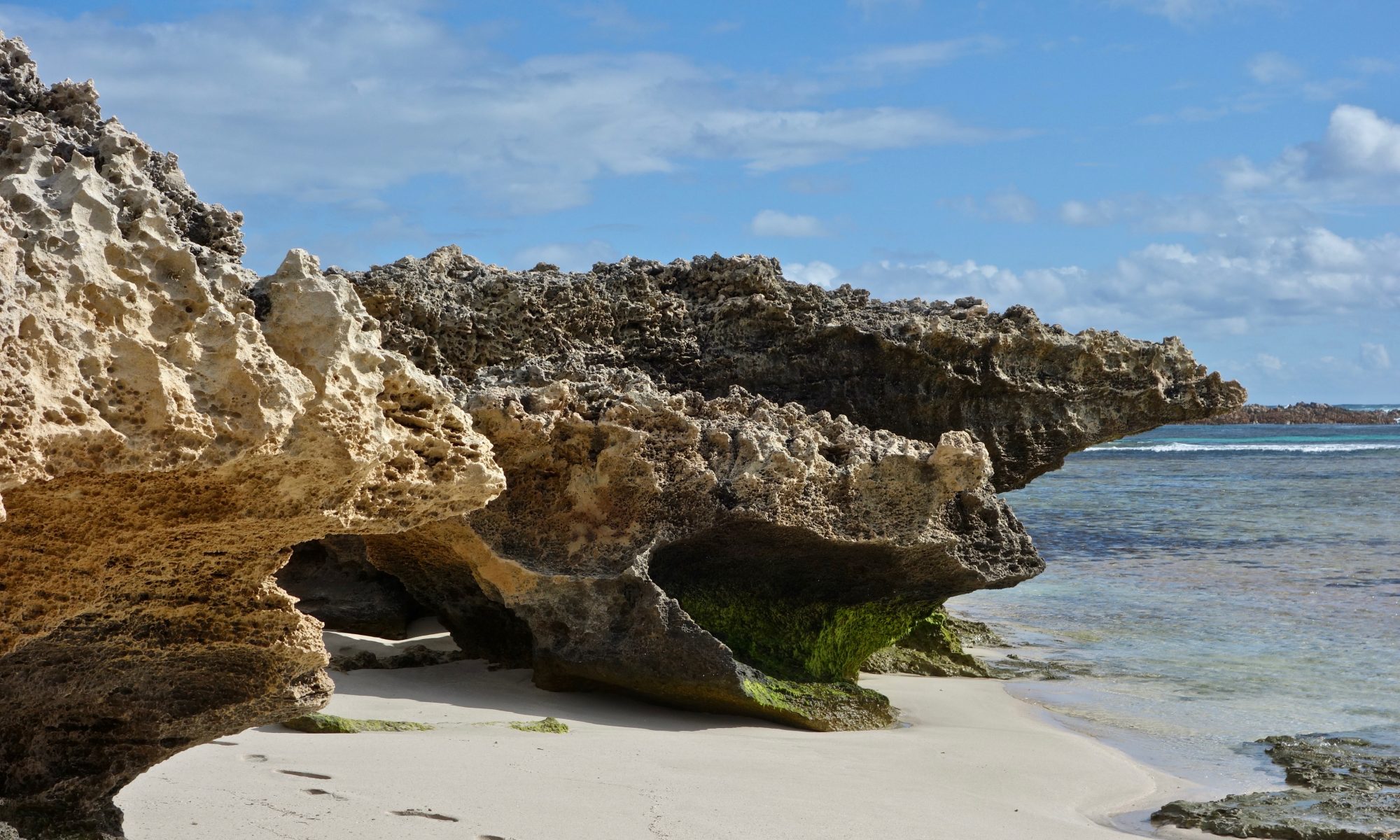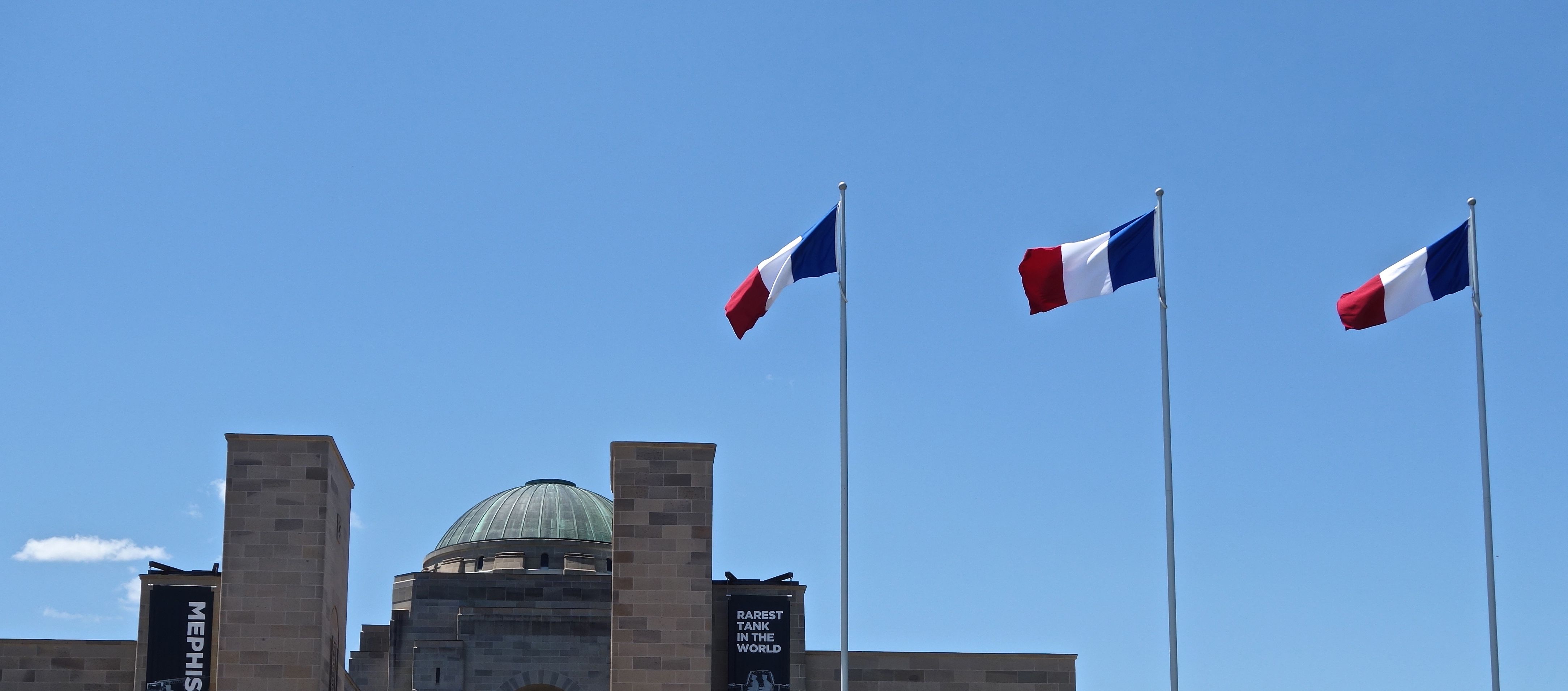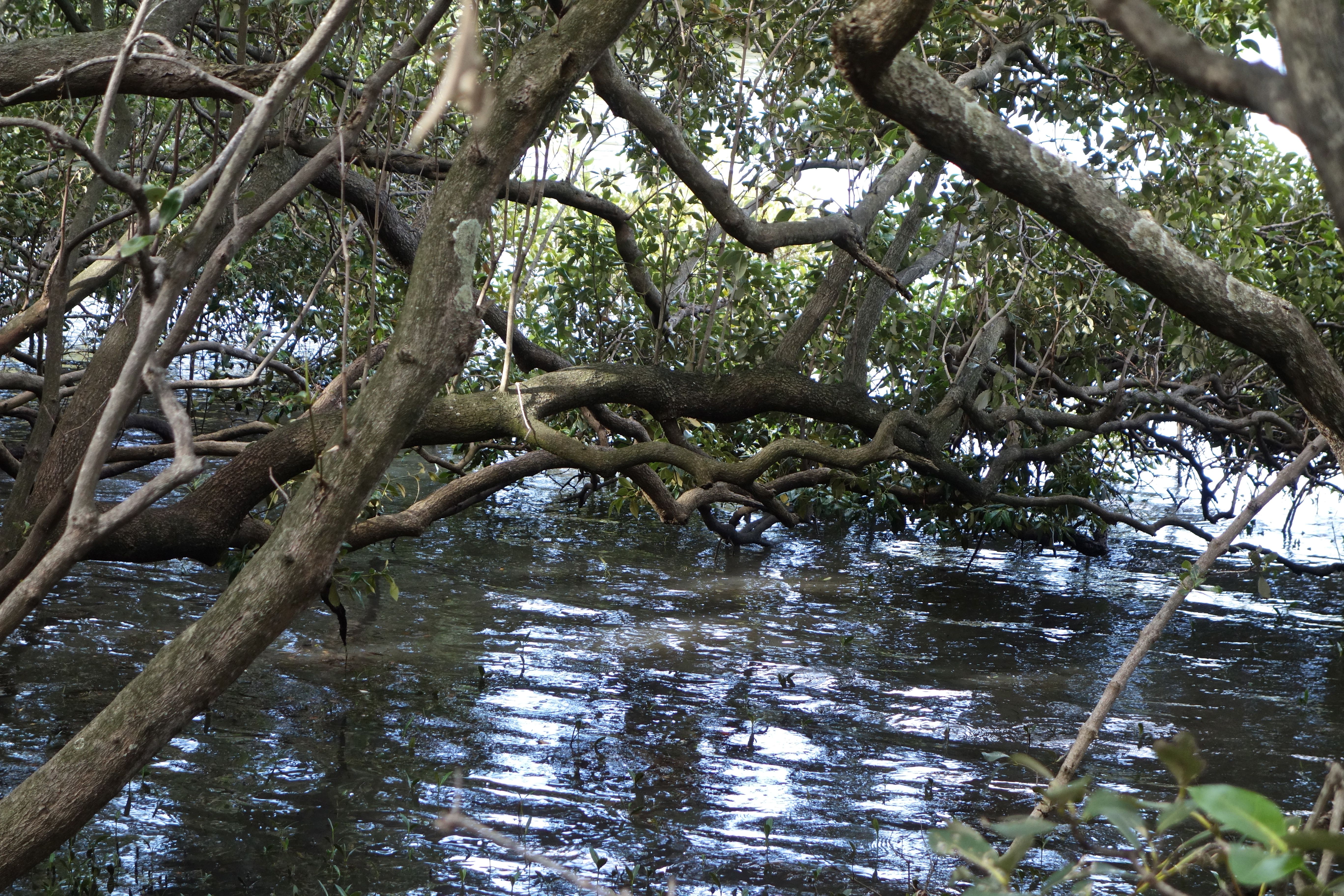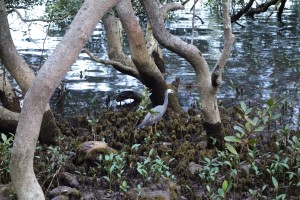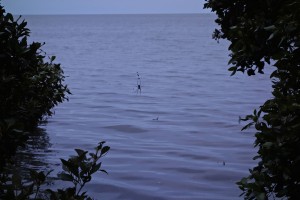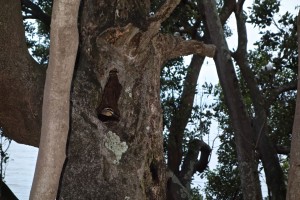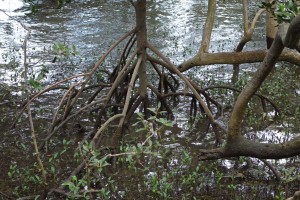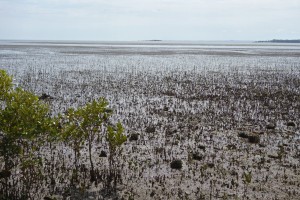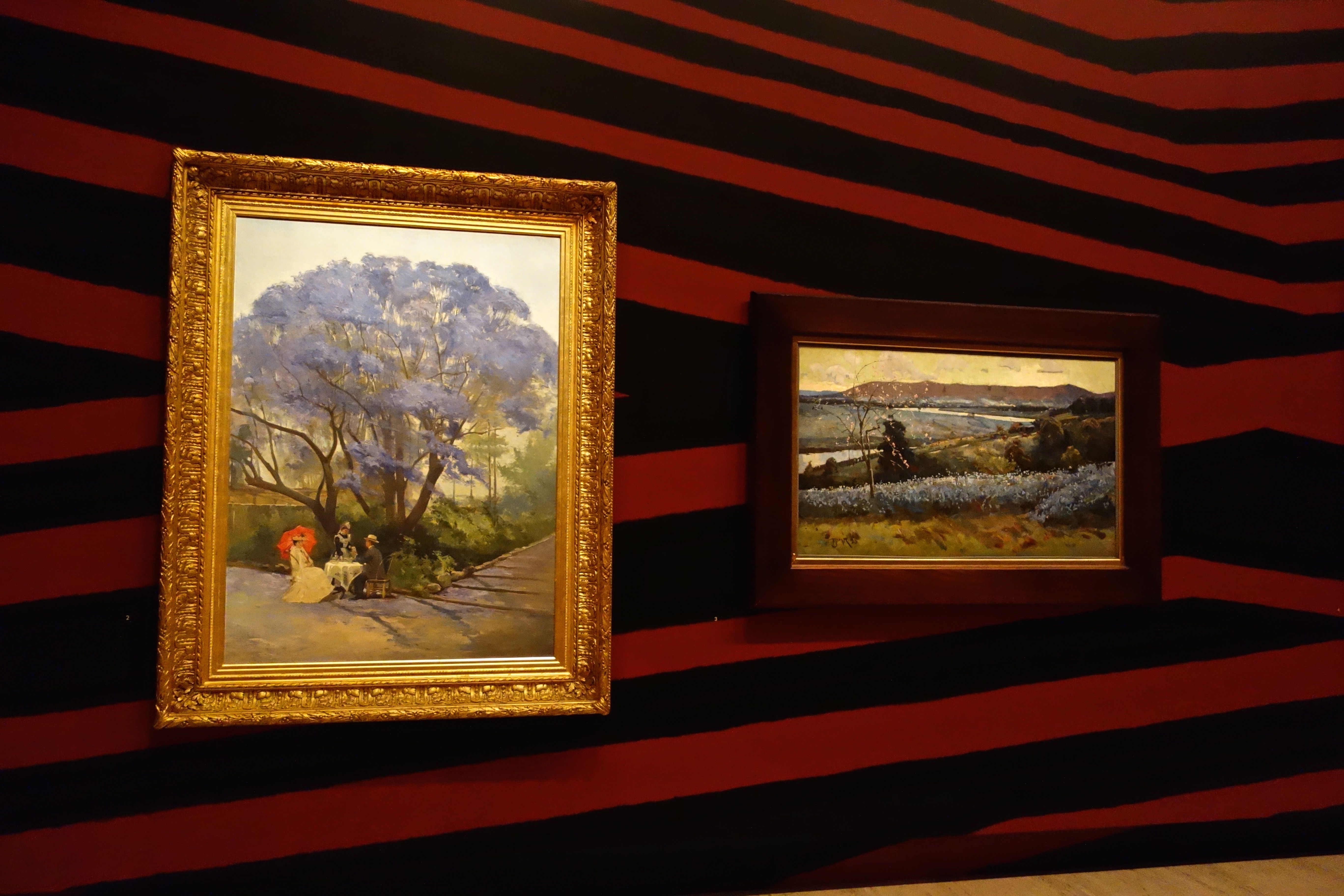Mangroves are sometimes seen as muddy swamps infested with mosquitoes and crocodiles. Removing mangroves was once seen as a sign of progress. So, what is the point of preserving them?
For a start, an estimated 75% of fish caught in Queensland spend some time in mangroves or depend on food chains that can be traced back to these coastal forests. (Source: http://wetlandinfo.ehp.qld.gov.au/wetlands/ecology/components/flora/mangroves/)
Australia has 11,500 kilometres of mangroves and nearly half of them are in Queensland. I’m presently on a bit of the Queensland coast where mangroves have been growing for millions of years in the protected coastal area of Moreton Bay. Mangroves were maligned when I was a child. They were muddy insect-infested smelly swamps, and those who lived close by had the poor-man’s water view.

Mangroves were filled in, built on or turned into a boat harbour. On the Lota foreshore in Brisbane, there is a long stretch of mangroves which comes to a sudden artificial halt where a marina has been built. The mangrove trees are still trying to grow at its edge, but I sensed an ecological loss when my walking path brought me to this dry bit of beach at the beginning of the harbour. If I were a boat enthusiast I’d probably feel different.

For some, mangroves are a Stygian swamp; for others they represent regenerative, indispensable, biological diversity. Mangrove plants can grow in salty water and thrive despite the tide flooding their roots and trunks twice a day. They stabilise the shoreline and protect it from wave and storm damage. The mangroves in Moreton Bay that have been spared have a unique beauty I’ve lately been discovering. On the other side of the stone wall forming the marina boundary, the foreshore looks like this:

If you walk slowly beside the mangrove forest, you discover creatures and plants that coexist in peace, if left alone. The light plays on the water in the afternoon as the tide comes in, and the low twisty branches intertwine and mingle like family. You might catch a heron stalking through the mud, or see a spider suspended in mid-air in its invisible web, or spot a duck in a tree hole.
Some mangrove plants have above-ground root systems, like the stilt roots growing out from the main trunk and down into the mud that stop it from being uprooted, or aerial roots, pneumatophores, that grow up from under the saturated, airless mud.
The mangrove experience is different at high tide and low tide, as you can see in the photos above, and I recommend both. These days the Queensland mangroves are protected by law, and now that their benefits are more widely known, there are Mangrove-Watch groups and a number of boardwalks for locals and tourists to enjoy. If you live near a tropical coastline, check out your local mangroves, stand and look, really look, at the roots, the thick mud, the land and sea creatures that exist because of this unique environment.
*****


